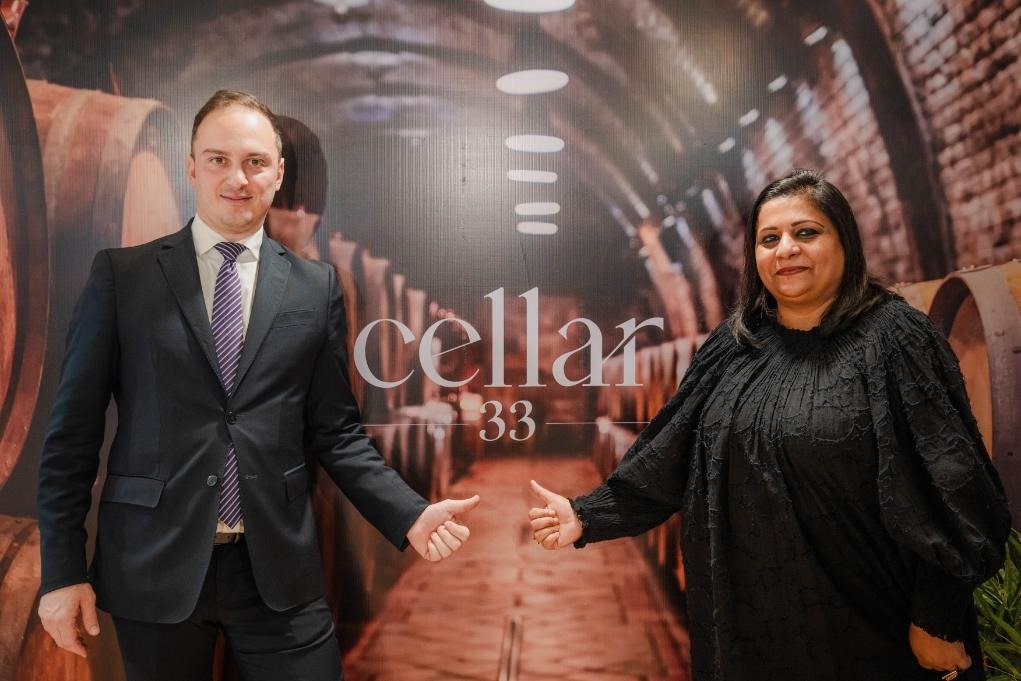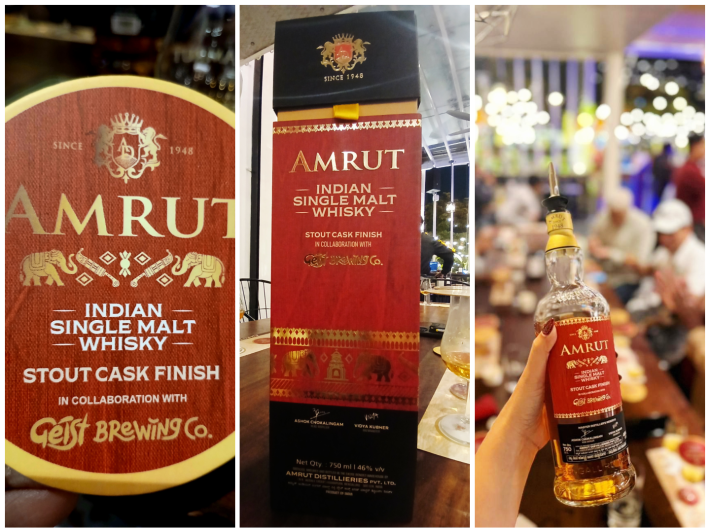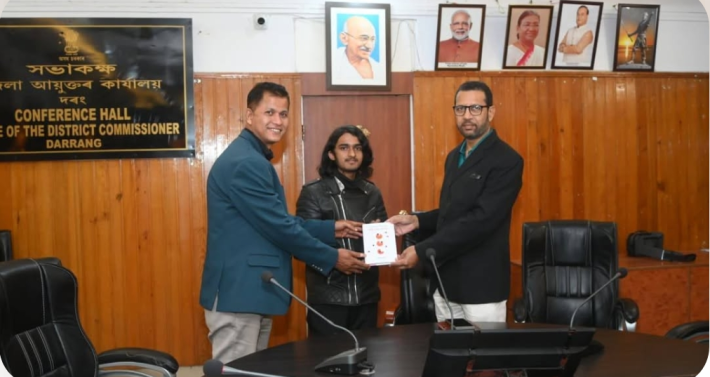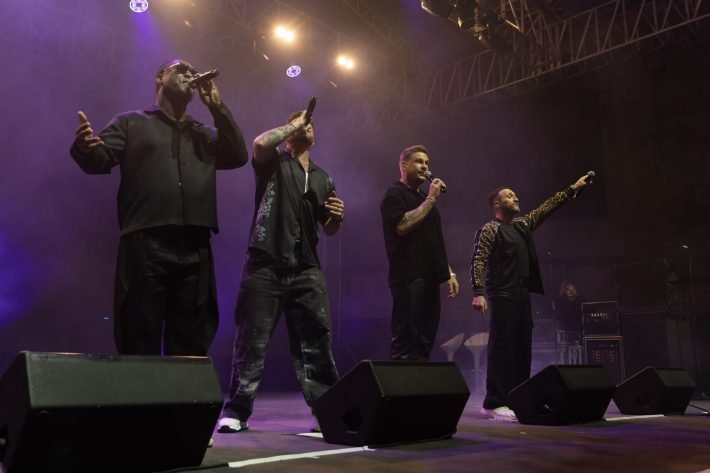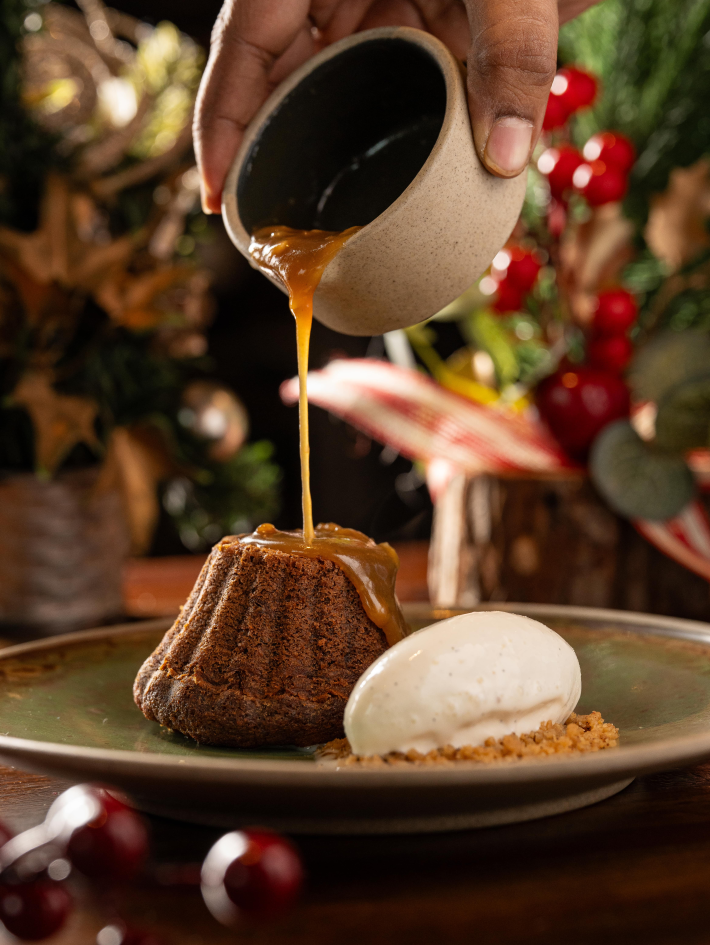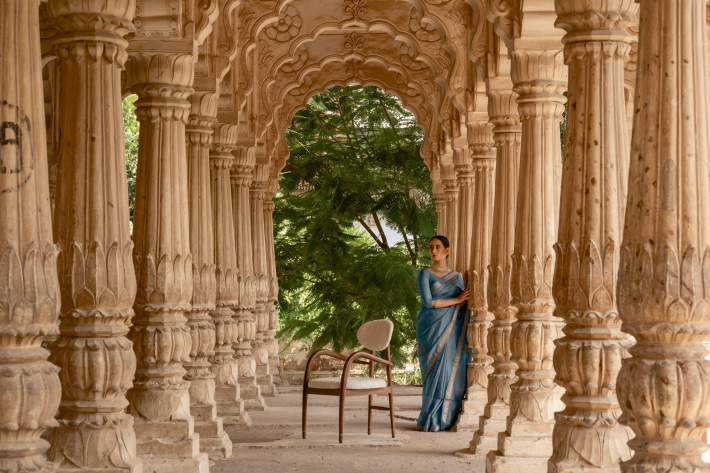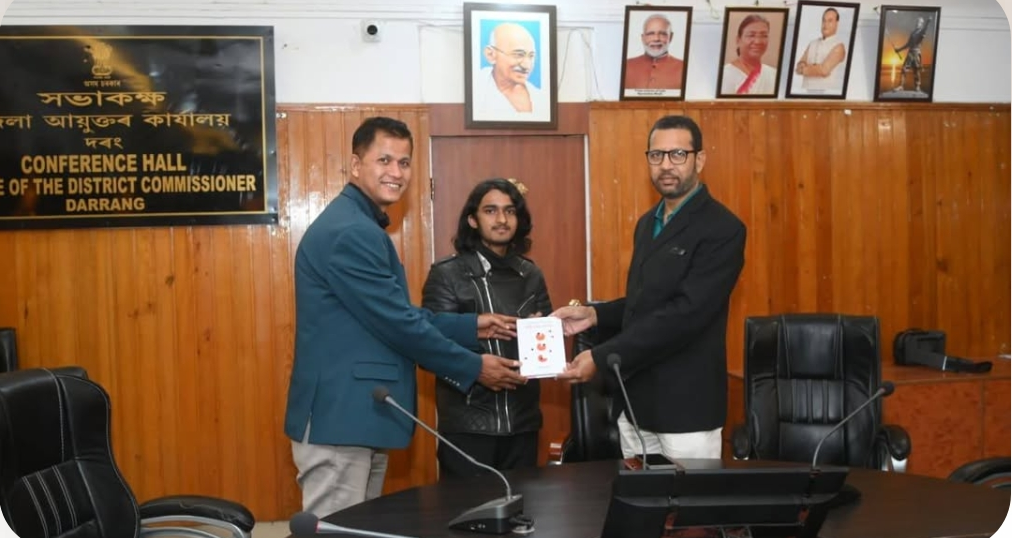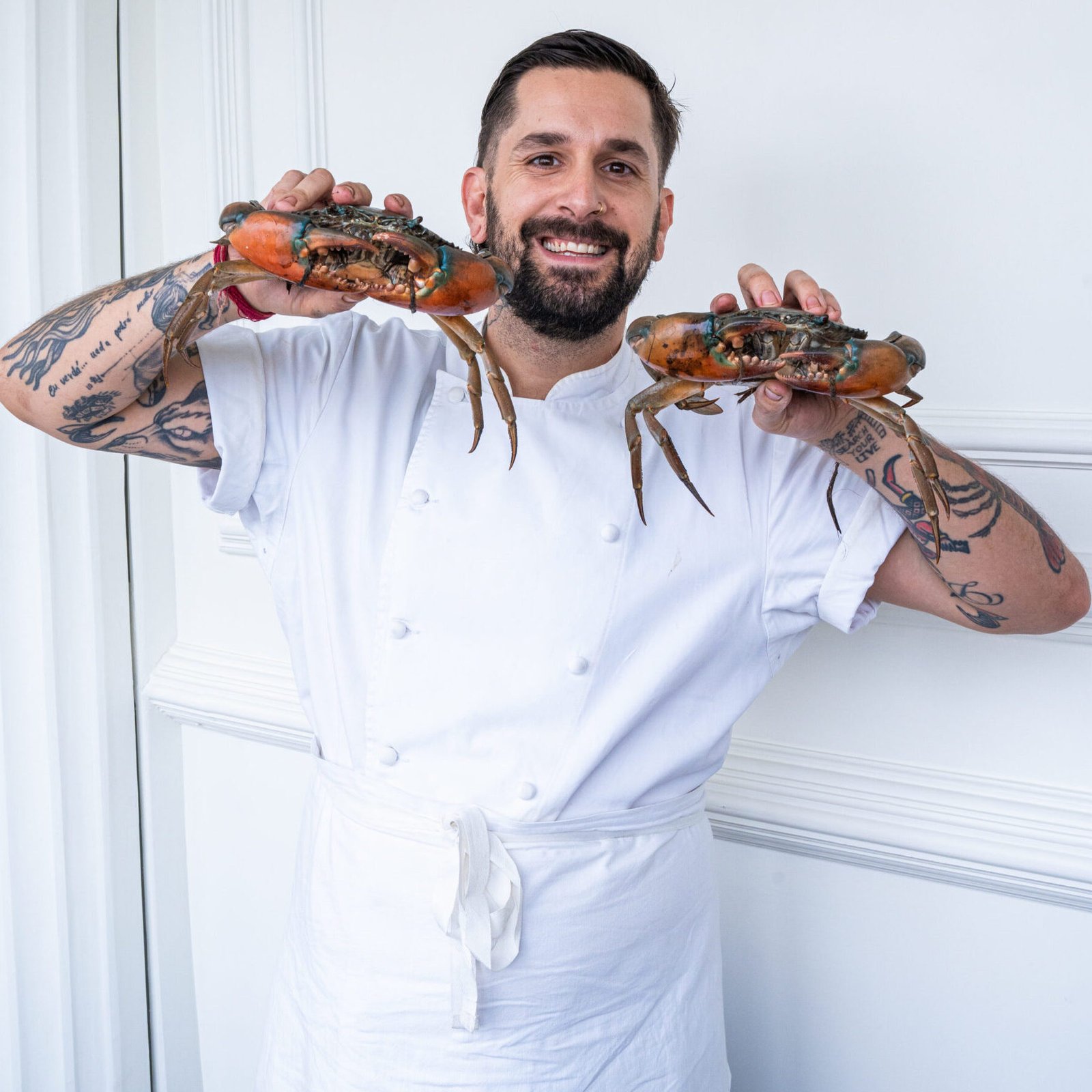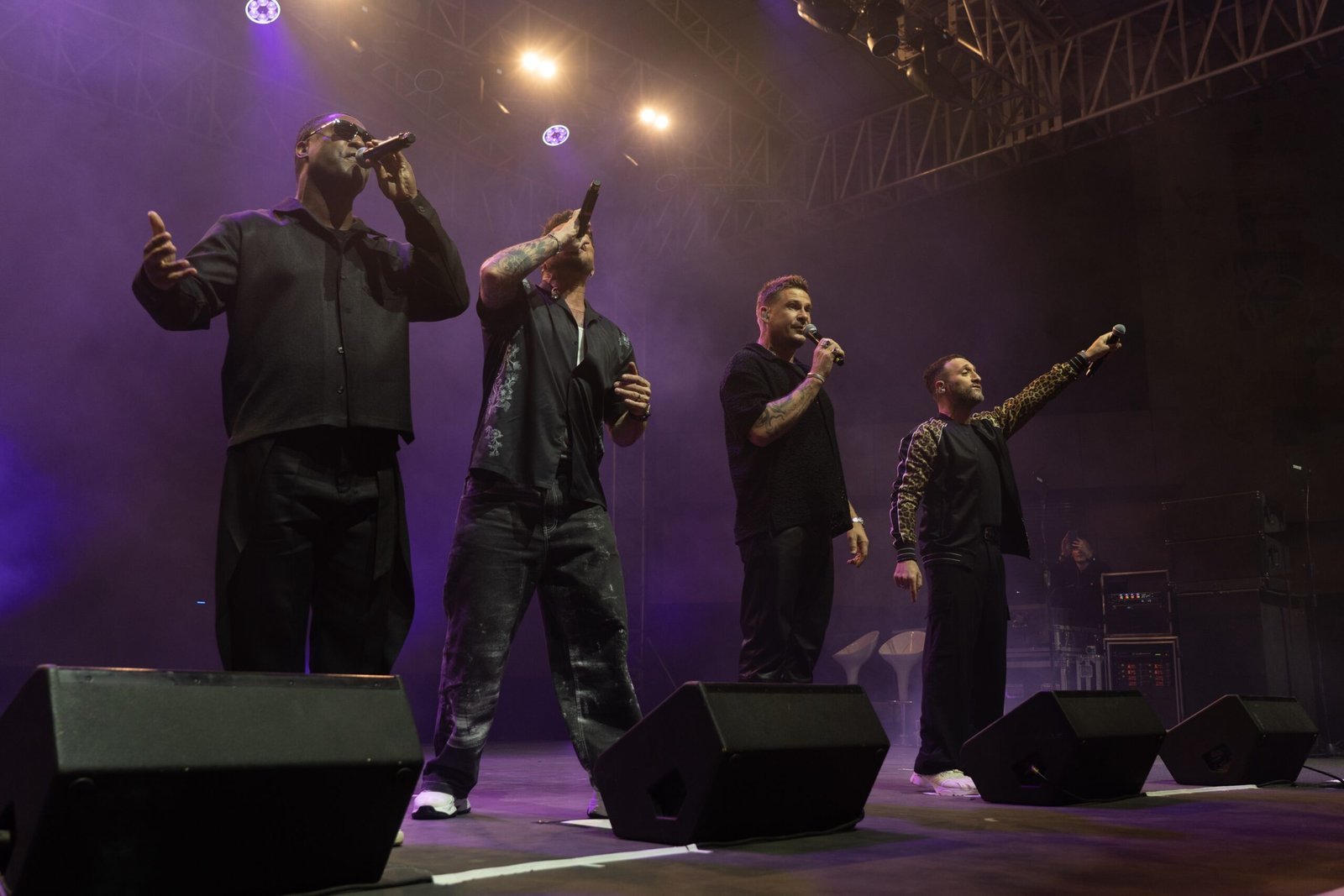Cellar 33 is the brainchild of Amrita Singh and Mattia Antonio Cianca, two individuals whose distinct yet complementary passions for the world of wine converged in 2020, and by 2023, they’d uncorked Cellar 33 right in the heart of Bordeaux. Amrita’s 17-year legacy in launching global luxury and lifestyle brands, coupled with her deep appreciation for wine (Master of Wine Candidate), merges seamlessly with Mattia’s decade-long immersion in the fine dining scene as a sommelier in esteemed establishments across Australia and Europe (Candidate for Best Sommelier of the World 2023).
Based in the heart of Bordeaux and strategically focused on the Indian market, Cellar 33 leverages their combined expertise in branding, marketing, and unparalleled wine knowledge to curate and promote exceptional Champagnes, wines, and spirits, building vital connections within the global wine community.
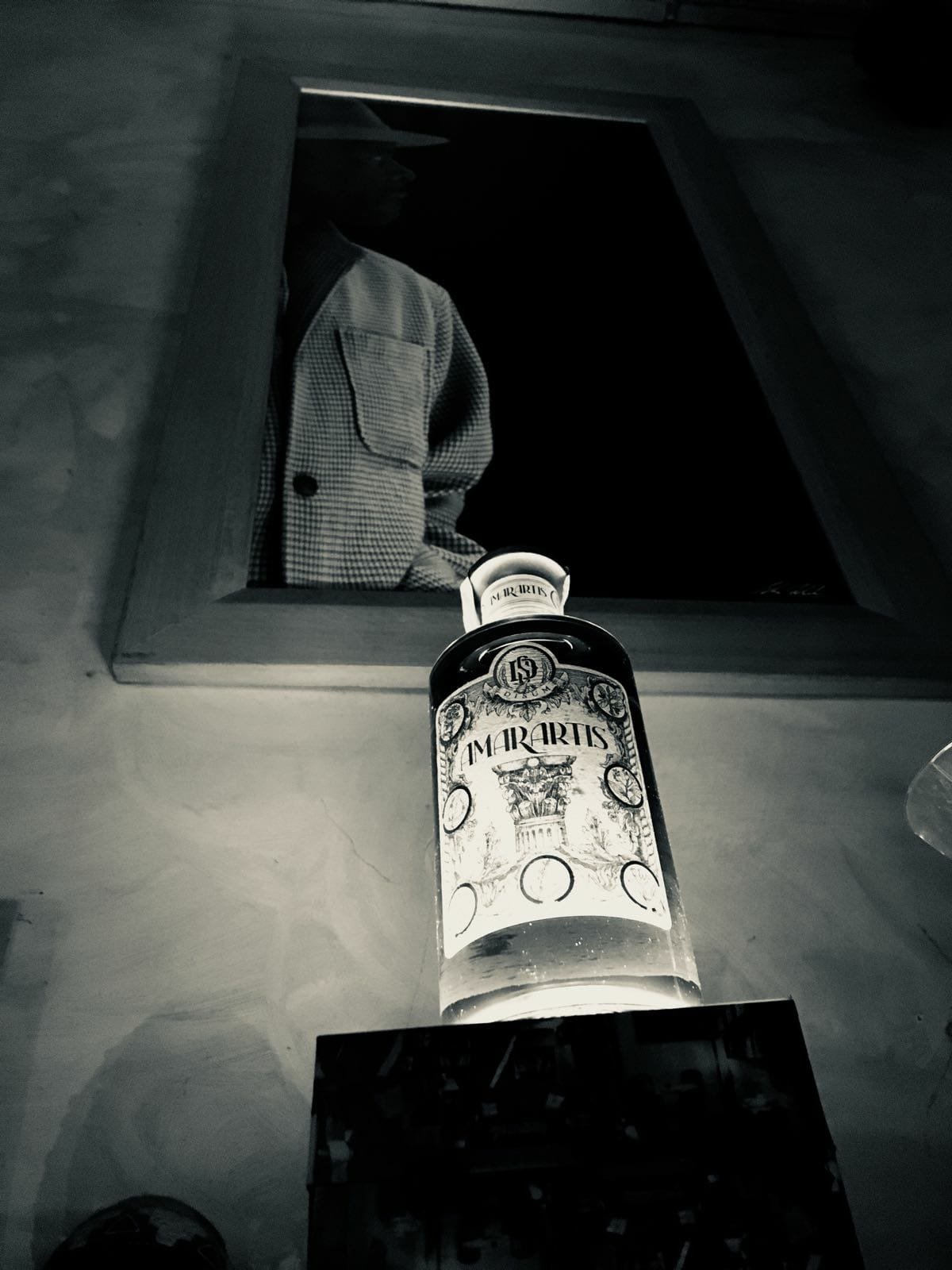
Amrita and Mattia are the dynamic duo shaking up the wine scene—think of them as the ultimate matchmakers, seamlessly connecting distinguished producers with the right connoisseurs. Their flair has taken them to top-tier wine showcases like VinExpo and ProWine India, where they’ve uncorked Europe’s finest labels and poured them straight into the spotlight.
In an exclusive interview with Rajeev Mokashi, Co-founder, TheGlitz, Amrita and Mattia shared the story behind Cellar 33. Amrita brings a wealth of experience from the high-stakes world of luxury brand launches, a skill set now poured into her passion for wine (she’s even on the Master of Wine track!). Complementing her background, Mattia developed his expertise in premier Australian restaurant cellars working alongside renowned chefs and has earned recognition as one of the world’s leading sommeliers, giving Cellar 33 valuable industry connections and refined taste.
Beyond simple distribution, Cellar 33 focuses on conveying each product’s narrative from production to consumption. Their approach combines decades of branding expertise with authentic wine knowledge, offering fresh perspectives to the fine wine and spirits industry. Over to Amrita & Mattia…

Rajeev Mokashi: How did your extensive experience in the fashion industry influence your transition to the wine and spirit sector?
Amrita Singh, Co-founder, Cellar 33: My wine journey began in 2004 when I tasted my first wine in Bangalore, a city ahead of its time embracing wine culture. My work in fashion involved extensive travel, which allowed me to explore wines globally, fueling my curiosity. By 2017, I decided to pursue formal education in wine and spirits. In 2018, I moved to Bordeaux to study MSc in Wine and Spirits Management. Mattia and I met in Bordeaux in 2020 and began collaborating on various projects.
Around that time, I had also established my own business while Mattia had his. In 2022, during a trip to India, we realized the potential of participating in VineExpo. Leveraging Mattia’s connections with Italian producers, we decided to showcase our offerings. This marked the beginning of Cellar 33, combining our expertise and passion to create something extraordinary.
RM: Was this the first time you participated, or have you been part of other events as well?
AS: We first participated in VineExpo Mumbai in August 2022, followed by VineExpo Delhi in the same year. At that time, VineExpo events were divided between Mumbai and Delhi, so we took part in both. In 2023, we attended ProWine instead of VineExpo, and last year, we returned to ProWine again. For me, this transition to the wine industry stemmed from a deep fascination with the subject. I’ve always viewed wine as an extension of lifestyle, much like fashion and art.
However, success in this industry requires immense passion and commitment. The wine world is challenging—it’s not highly lucrative, and it demands pushing your limits, whether in studies or in starting a business. It may seem glamorous, but the reality is tough. Without genuine interest and passion, it’s hard to sustain and succeed in this field.
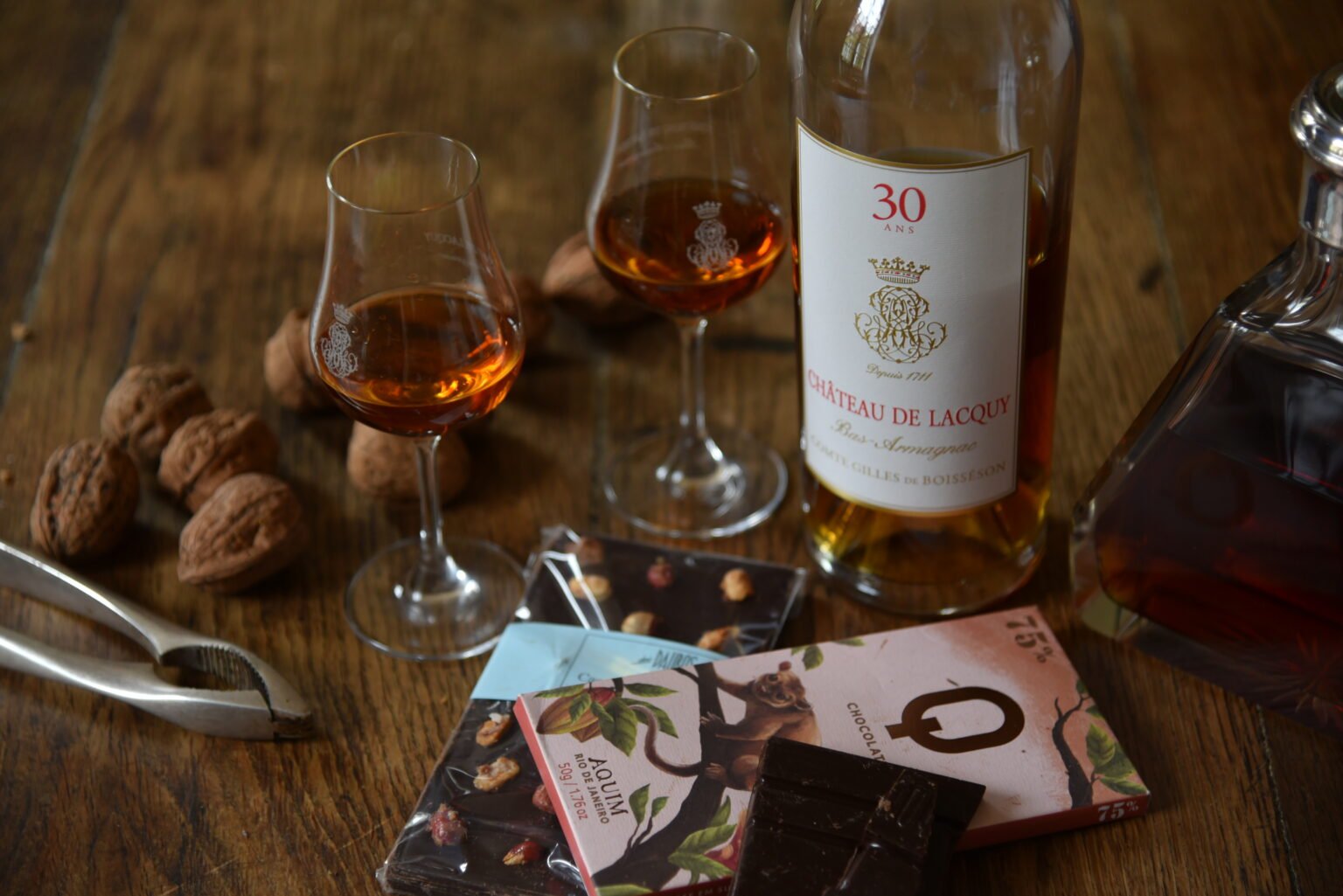
RM: Mattia, share your journey from Rome to Australia and then transitioning into the wine and spirit industry?
Mattia Antonio Cianca, Co-founder, Cellar 33: I’ve worked in hospitality since I was 14, but I didn’t know anything about wine until I moved to Australia. I got a job at an Italian restaurant in Perth, which had nearly 500 wines on its list, mostly Italian. At the time, I felt embarrassed because I knew nothing about wine. To stay in Australia long-term, I needed sponsorship from the restaurant, and since it was a wine-driven establishment, everyone on the team was required to have wine knowledge.
I began a course in 2011, which marked the beginning of my journey. What started as a necessity quickly turned into a passion. Once I completed my first course, I was hooked. I continued learning, exploring, and immersing myself in the endless and fascinating world of wine. Everything else naturally followed from there.
RM: Talking about the recognition you’ve earned as a sommelier, what are the most memorable moments or challenges you’ve encountered in your career?
MAC: One of the biggest challenges I faced was landing my first proper job as a sommelier. Everyone aspires to work in top places, but starting without prior experience is tough. To overcome this, I convinced a prestigious restaurant in Australia to let me work for free for the first month. I remember my first day vividly—I was tasked with delivering bread to tables. It took me an hour just to understand the intricate details of the bread and its condiments. I spent the rest of the night polishing glasses and learning from the sommeliers on the team. By the end of the service, the manager called me into the office. I thought they weren’t impressed, but instead, they offered me a full-time position at the end of the month. That moment solidified my journey into wine hospitality.
As for memorable moments, winning the title of Best Sommelier of Australia stands out. It was a surreal experience, especially since I had competed three years earlier and lost. Returning after three years, I found myself in the finals competing against my boss, who finished second. It was a mix of emotions—stress, pride, and camaraderie—that made it unforgettable. Today, my boss and I are great friends, which makes this memory even more special.
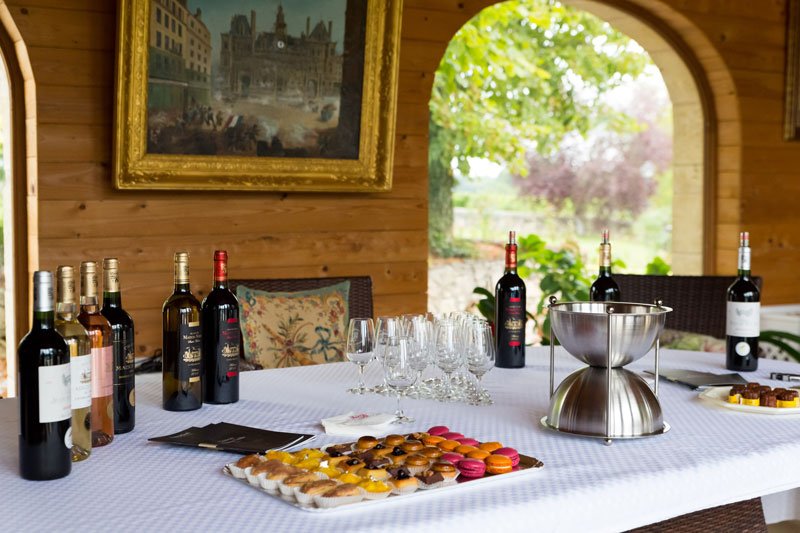
RM: What motivated you to pursue your passion for wine and eventually start Amrita Singh Studios?
AS: As mentioned earlier, I spent 17 years in fashion, starting when it wasn’t even considered a mainstream career in India. After graduating from the National Institute of Fashion Technology in 2001, I launched Van Heusen Women for the Birla Group and stayed there 11 years. At Jabong.com, I managed 40% of the business across women’s, luxury, and lifestyle categories.
Despite my success, wine had always intrigued me during my travels, so I took a leap of faith. After building my fashion career for 17 years, I moved to Bordeaux to study wine formally after my MSc. Now I’m pursuing the Master of Wine qualification while Mattia works toward becoming a Master Sommelier.
Post-COVID, I started Amrita Singh Studios, focusing on wine, fashion, and art consultancy. I teach creative business marketing in India and Bordeaux, but my primary focus is Cellar 33. Based in Bordeaux, we work with medium and boutique producers across six European countries to introduce exceptional wines, including the best of champagnes, reds, whites, and local varieties to the Indian market. We have about 50-60 producers in our portfolio.
We create 360-degree activations at events, bringing producers and top European sommeliers to create authentic experiences for Indian consumers. Right now, I’m focused on Cellar 33’s success, the Sommeliers Association of India, and my studies. These efforts are building a strong foundation for wine appreciation in India.
RM: What inspired the founding of Cellar 33 after you both met and how do you blend your unique backgrounds to create a successful wine and spirits consultancy? What are the strengths that you both bring to the table?
AS: Our collaboration grew organically. We each had our own companies when we showcased producers at India’s first VineExpo and noticed tremendous interest. Mattia brought his distribution and export expertise, while I contributed my brand building and marketing skills. When he called about starting an export agency, and I was planning a marketing agency, we saw the perfect opportunity to merge our strengths.
My Indian network and Master of Wine connections complemented Mattia’s sommelier expertise and producer relationships. We initially presented as ‘Selezione Vini Italiani’ at VineExpo Mumbai, but as our portfolio expanded beyond Italian wines, we needed a more inclusive name. A friend suggested ‘Cellar,’ and our branding agency recommended adding a number. We chose ’33’—Bordeaux’s postal code and our base.
What makes Cellar 33 unique is our complementary backgrounds. Mattia’s sommelier expertise brings wine credibility, while my marketing background ensures strong producer narratives. Together, we help boutique producers succeed in new markets, especially India.
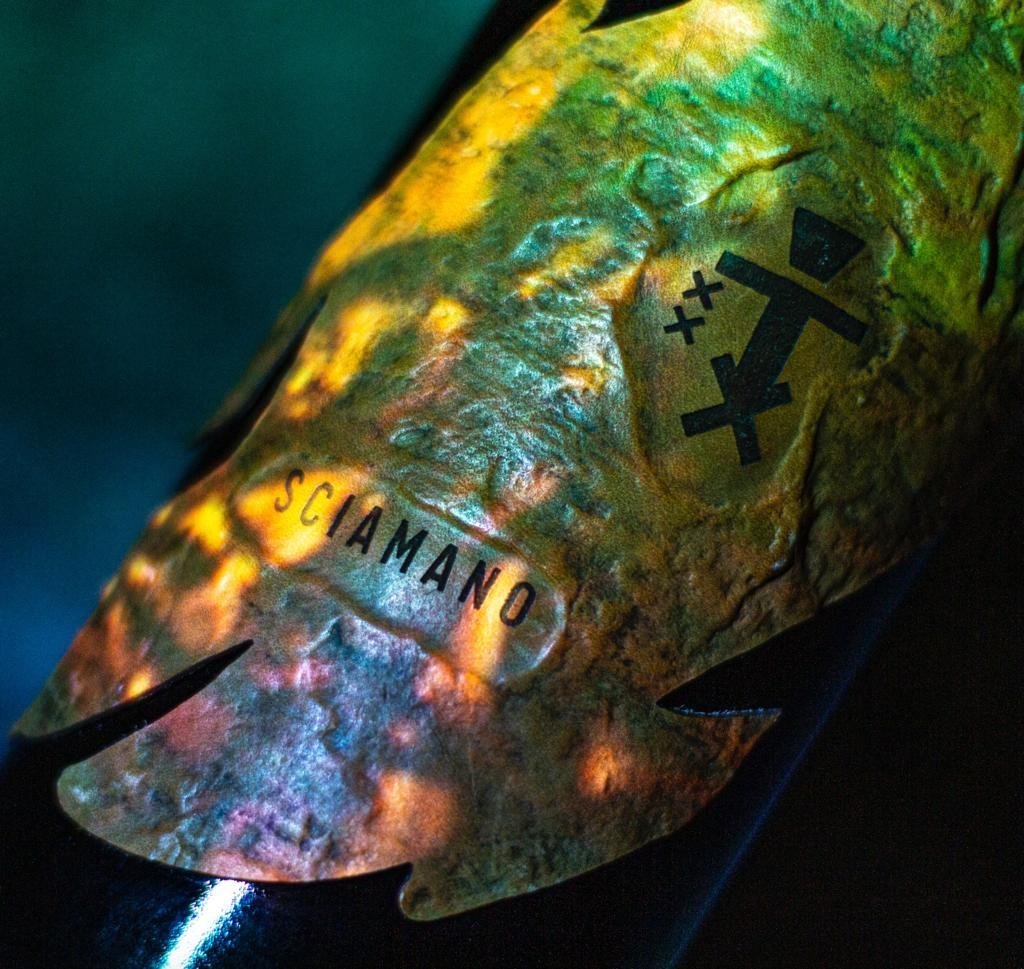
RM: When you say it’s not focused only on Italy or France, is it about introducing European wines as a whole?
AS: Yes, we cover the whole European region—including countries like Portugal and Germany, along with other winemaking nations. Currently working with producers from Italy, France, Spain, Austria, Germany, and Hungary, but we’re open to Portugal and others as well. The real challenge isn’t finding wines; it’s securing the right Indian import partner. There are about 20 key importers in India, but they already have established portfolios.
We’re also dealing with India’s 150% import duties and various restrictions, which limit wine variety. But we’re optimistic. Our strategy focuses on strong market positioning—like when we showcased 14 champagne producers at once, creating unprecedented buzz that attracted quality importers. We’re now in advanced discussions to expand our Indian portfolio. By creating tasting opportunities, we’re building long-term interest and demand despite the challenges.
RM: Knowing India is more of a beer and spirits industry, how do you plan to educate the Indian audience about wine and champagne? Are there specific strategies that Cellar 33 is adopting to engage with Millennia’s and GenZ, who are gradually showing interest in wine?
MAC: That’s a very complex question. Introducing wine in India is undoubtedly more challenging compared to spirits like whiskey, gin, rum, or vodka. These are already well-accepted in the market, and people are familiar with them, making it easier for spirit brands to innovate and gain traction. Wine, on the other hand, requires consumers to acquire a taste for it. It demands a passion and curiosity to explore the variety—whether it’s white, red, rosé, or champagne. That’s where the challenge lies.
However, there is potential because Indian consumers, in general, have a culture of alcohol consumption, whether it’s high-alcohol spirits or beer. Wine fits somewhere in the middle, with its moderate alcohol content. The idea is to introduce wines that offer the best value and represent their category authentically, which is currently lacking in India. The strategy involves collaboration—working closely with importers and distributors who are willing to invest in growing this segment. But it’s not just about convincing importers to buy and stock wine; there’s also a need to connect directly with consumers. This will take time and consistent effort.
One of the biggest hurdles is the prevalence of low-quality wines that are overpriced due to high import duties and structural challenges in the Indian market. By introducing wines that are reasonably priced at the source but still showcase the true essence of their region, we can make a strong impression.
As for educating the audience, it requires a two-fold approach:
- Basic introductions: Helping consumers understand the basics of wine through tastings, events, and storytelling.
- Consistent communication: Regularly engaging with the audience to build awareness and interest over time.
Wine is not yet strongly associated with events like music festivals or cultural gatherings, but there’s immense potential there. Associating wine with such events or creating exclusive wine-centric experiences can help Cellar 33 not only build brand presence but also promote wine consumption in an approachable and enjoyable manner.
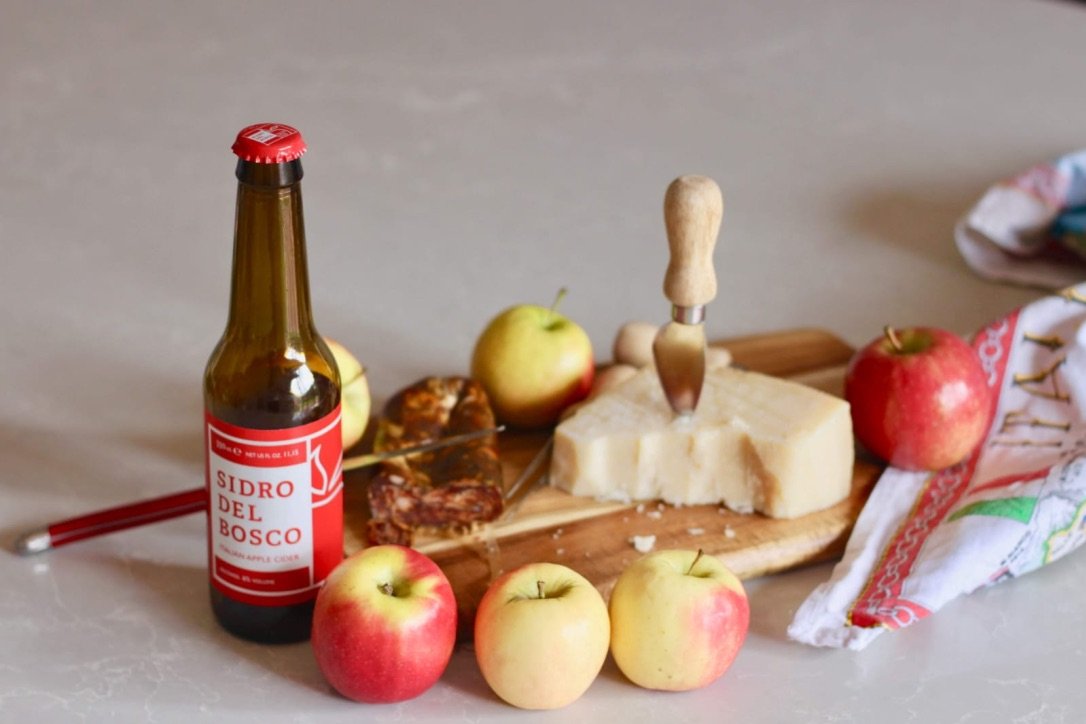
RM: Do you think that wine has the potential to be featured at events, and what kind of collaborations could be done?
When we talk about musical events, most alcohol brands already associate themselves with such events. However, there is no major event yet that focuses solely on wine, where wine would be the drink showcased during a musical event. For such events to work, wine needs to be the central attraction, and it has to be something that pulls the crowd in.
Q10. Do you think an event like that would enhance Cellar 33 in its first year in India?
Amrita Singh, Co-founder, Cellar 33:
The idea is to bring an international perspective that hasn’t yet been applied in India and adapt it to the local market. It’s essential to understand what works internationally, but also how it needs to be tailored to India’s unique cultural context. You can’t just replicate what works in other countries, but by analyzing and adjusting, we can create something that resonates locally.
Events, not just music festivals but any form of gatherings, can play a vital role in positioning wine. The key is to integrate wine into the right events and connect it with the right audience in an appropriate way. I see significant scope in this area because there are no wine-specific events currently in India or even associations with wine-making regions or companies. That could serve as a strong starting point for Cellar 33.
However, when it comes to musical events specifically, wine consumption isn’t as prominent as beer or cocktails. I’ve attended several international music festivals, and you don’t see much wine being consumed. Instead, beer and cocktails dominate. Wine is more of an experience—it’s about tasting and savoring, which doesn’t align well with the high-energy environment of a music festival where people are on their feet. Internationally, wine brands are addressing this challenge by introducing wines in cans, PET bottles, or even tetra packs to make them more accessible at large-scale events.
But, wine as a category still faces struggles in such settings. That said, over time, it will gain more traction. We’re seeing an increasing number of wine events in India, particularly wine and food pairing events. Wine and food pairing is a universally loved concept, and it’s gradually being accepted in India as well. We are also witnessing more families accepting wine during social functions and festivals, which was not the case before.
Women and families are now incorporating wine into their gatherings, making wine consumption more common in homes. India’s large, youthful population is also driving this shift. Many young people are becoming more health-conscious and prefer consuming beverages with lower alcohol content. Wine, with its alcohol content between 5-16%, fits perfectly within this trend. This is why we see wine increasingly being included in events and homes, especially when paired with food.
Top restaurants and chefs are now curating wine lists, something that wasn’t common in the past. This is a positive sign for wine’s growth in India. While wine-focused events are becoming more common, musical events still present a challenge. Internationally, even wine brands struggle to sell wine at large music festivals, so this will likely take longer to establish in India.

RM: Can you share some challenges and successes you’ve faced since entering the Indian market?
AS: One of the biggest challenges has been getting the products to India. We’ve been working on this for two years, trying to find the right partners—ones who are legally compliant, ethical, and knowledgeable. We want our partners to offer the same experience as in Europe. Despite having an excellent portfolio, getting through the final stages of import discussions has been tough, especially due to pricing and duty constraints. Additionally, the consumption of wine in India is still very low, with wine holding less than 1% of the total alcohol market share. A shift in this is necessary for unique wines like ours to gain traction.
Despite these challenges, we’ve seen great success. Cellar 33 has become a crowd-puller at events like VineExpo and ProWine, where we are now invited to participate rather than having to reach out. The industry, including educators, journalists, and hospitality groups, has shown huge appreciation for us. We invest time and resources to ensure that every experience is top-notch, with sommeliers and producers present to educate and present our wines.
We’ve also built strong brand recognition without paid media. India has a unique market where luxury wines are in demand but are fewer in number. Top brands like Sula, Fratelli, and Grover dominate, but we see a shift as consumers are now willing to spend ₹2,500 to ₹5,000 on a bottle. There’s still a long way to go in educating consumers about different wine regions like Bordeaux or Burgundy, but we’re focusing on education, with Mattia’s experience as a globally acclaimed sommelier strengthening our efforts.
India is a price-sensitive market, and the 150% import duty significantly increases wine prices. While we offer quality wines across various price points, the final cost to consumers becomes quite expensive due to duty. We are working on balancing quality with accessibility as we continue to navigate these challenges.

RM: When do you expect the first consignment and marketing efforts to take shape?
AS: We expect it to happen soon. We’ve done all the groundwork—Mattia just left India yesterday after meeting reporters and conducting tastings. Everything is in place. Now, we’re pushing forward, but the next step is converting interest into actual orders. While there’s been significant interest, we’re still in the phase of turning that interest into confirmed orders.
RM: How do you prepare for prestigious competitions like the Best Sommelier of the World and the Court of Master Sommeliers exams, given your long list of successes?
MAC: Preparation is all about obsession and dedication, not only talent. It’s a memory-driven process, where everything—taste, smell, and recognition—comes from the brain. To excel, you need to understand how your brain works and how you best retain information, whether it’s in the morning, after lunch, or dinner. It’s about self-motivation and passion.
For competitions like the Court of Master Sommeliers, the focus is on theory exams, which require fast recollection and instant responses. You must train your brain to recall information quickly and accurately. The key is to know your strengths and weaknesses and to capitalize on what sets you apart from others. Everyone can pass exams, but in competitions, there’s only one winner, so minimizing mistakes is crucial.

RM: How do you prepare?
MAC: Preparation is like training for a sport – you need constant practice. Even the best athletes repeat the basics every day, and that’s key. For me, it’s all about mastering the basics, as they always come back. I also link memories to music, acronyms, or melodies to help me retain information, as it’s impossible to remember everything without such tools.
RM: How has winning the Golden Wines WSET Scholarship and other accolades impacted your career?
AS: The last six years have been incredibly exciting. Moving to Bordeaux with no contacts was a risk, but it paid off. I now call Bordeaux my second home, with a huge network in the wine industry. Winning scholarships, including the Golden Wines and Wine Scholar Guild in 2022, has been life-changing. These scholarships offer funding, recognition, and incredible access—allowing me to visit wine estates and meet industry icons. They’ve brought inclusivity and opened doors to people I couldn’t have reached otherwise. It’s not just about the funding; it’s about connection and acceptance in the industry.
RM: How do you see the future of Cellar 33?
AS: We are very confident about Cellar 33’s future. Our portfolio, the stories we tell, and the connections we bring excite people. We’re not just selling wine; we’re offering an experience. Our passion is evident when we talk about wine, and we’re bringing that passion, reputation, and knowledge into our work. While challenges in India, like pricing and market constraints, exist, we’re pushing forward. Once people experience our wines in top restaurants and bars, I believe our success will follow. It will take time, but with our vision and unique offerings, I’m confident we’ll make an impact.
Image courtesy: Cellar 33
YOU MIGHT LIKE: The Sommeliers Association of India Takes Center Stage
